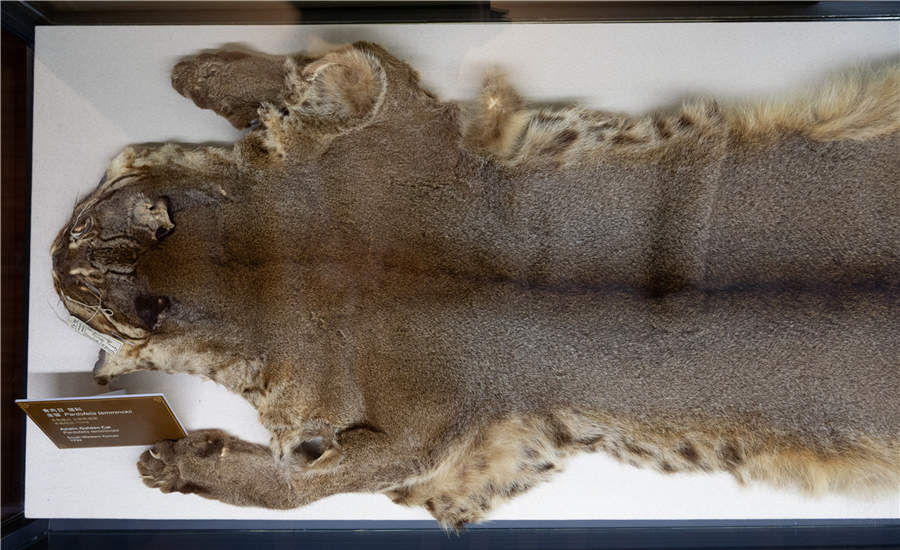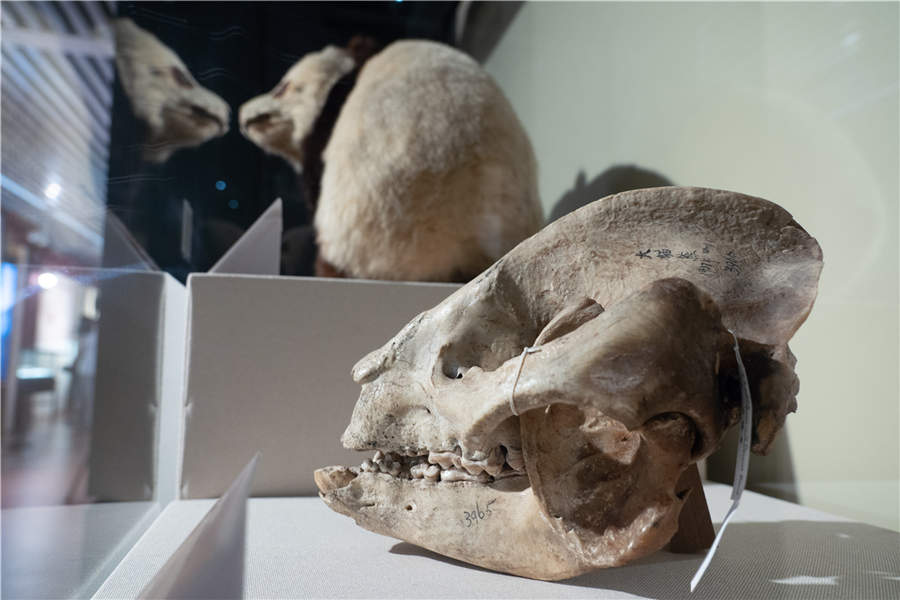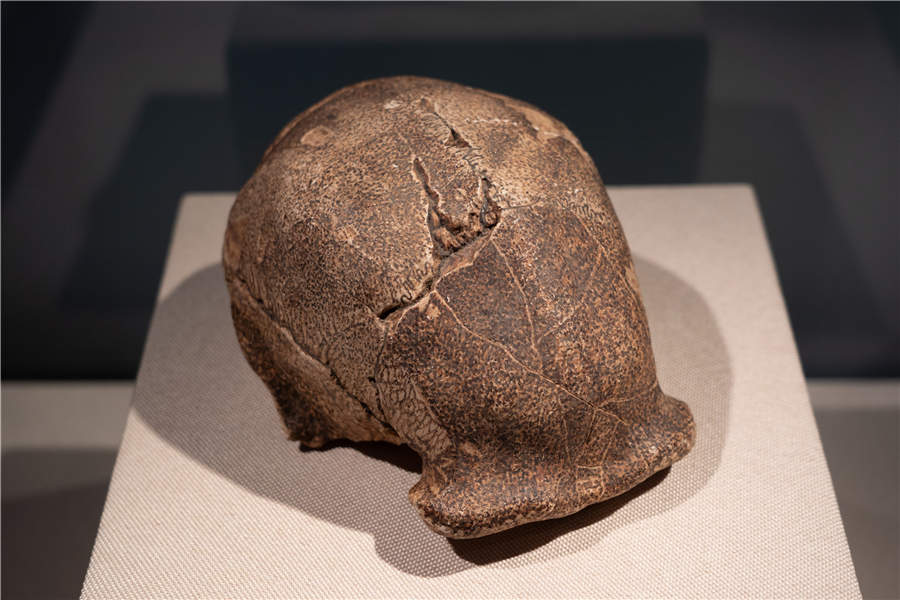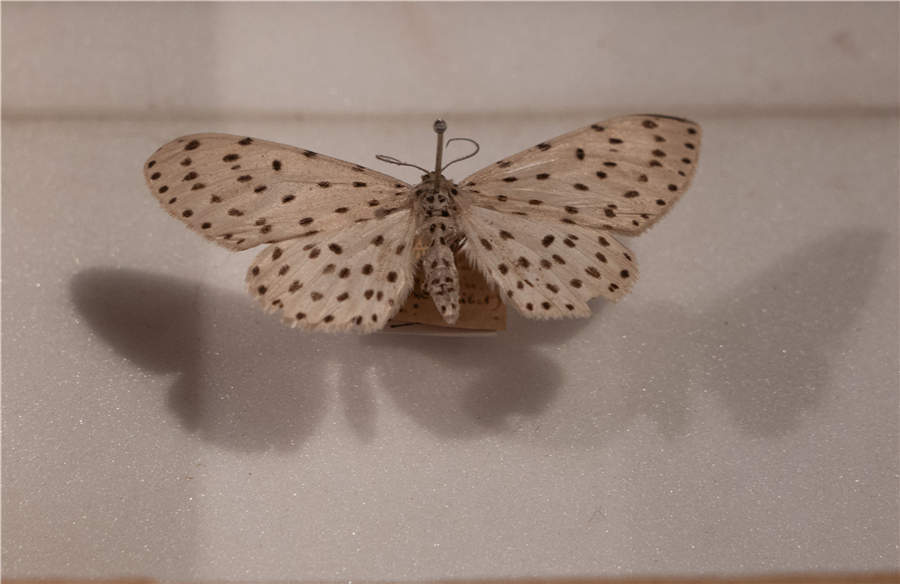
The world's oldest complete specimen of a Chinese river dolphin which was collected from the Yangtze River in 1910. [Photo by Gao Erqiang/China Daily]
An exhibition featuring the artifacts once showcased at the Asiatic Society Museum, one of the first museums in the China, is now on at the Shanghai History Museum till Oct 21.
The Asiatic Society Museum was officially established in 1874 at No 5 Yuanmingyuan Road (now No 20 Huqiu Road of Huangpu district).
Titled "Century Collections – tracing the history of Shanghai", the exhibition is jointly hosted by the Shanghai Science and Technology Museum, the Shanghai Museum and the Shanghai History Museum. Admission is free.
The exhibition aims to present the early development of Chinese museums, as well as the development in the research of natural history, anthropology, archaeology and art in Shanghai.

The specimen of an Asian golden cat, which was collected in Southwest China's Yunnan province in 1924. [Photo by Gao Erqiang/China Daily]
According to Yang Zhigang, director of the Shanghai Museum, many of the 151 objects on display belonged to the original collection of the Museum of North China Branch of the Royal Asiatic Society.
In 1952, the museum operator, the Royal Asiatic Society, was closed and the museum collection was transferred to the municipality. The artifacts were later given to the Shanghai Museum of Natural History.
The displays of the ongoing exhibition have been arranged in a vintage style to recreate the original experience of going to the Asiatic Society Museum. For example, the first specimen of a Chinese giant panda is exhibited in a box that looks just like the original exhibition space at the Asiatic Society Museum.
Visitors to the exhibition at 325 Nanjing Road West can also enjoy interactive experiences and learn more about the exhibits through a mobile application.

A panda skull is seen at the exhibition. [Photo by Gao Erqiang/China Daily]
"We have not only brought the original specimens from the former Royal Asiatic Society, but also arranged the exhibition according to historical documents and pictures," said Huang Ji, curator of the exhibition and a scholar at the Shanghai Museum of Natural History.
"The original building of the Asiatic Society Museum is occupied, so we can't have the exhibition in the original location," said Wang Xiaoming, director of the Shanghai History Museum. "Our museum, which is a historical architecture that has been around since the 1930s, is seen as an ideal venue."
An academic forum titled "The spirit of natural history in the metropolis" is also ongoing. The event features museum directors and administrators from all over China discussing about the history of museology and how museums impact urban culture.
Zheng Yiyi contributed to this story.

The earliest animal specimen in China, a leopard, which was collected in 1871. [Photo by Gao Erqiang/China Daily]

In 1927, the Shanghai Museum of Royal Asiatic Society reproduced the skull of the Peking Man. The original piece was lost in the war. [Photo by Gao Erqiang/China Daily]

The specimen of a golden cat, which was collected in Fujian province in 1920. [Photo by Gao Erqiang/China Daily]

The specimen of a geometrid moth made by Priest Fr Jean Pierre Armand David in Sichuan province in 1870. [Photo by Gao Erqiang/China Daily]

A tripod with decorative design of beasts from the late Shang Dynasty (13th-11th century BC). It was preserved by the Royal Asiatic Society before and is now held by the Shanghai Museum. [Photo by Gao Erqiang/China Daily]


